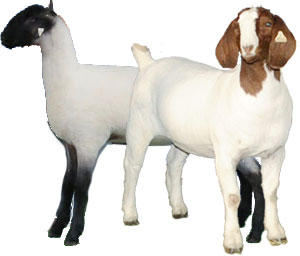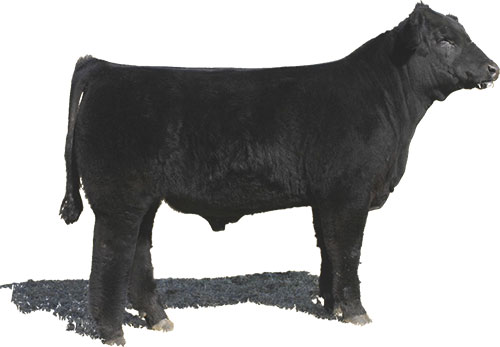Teaching Newsletter - April 2015
Urinary Calculi in Sheep and Goats
Urinary Calculi, commonly called known as "Water Belly," is a urinary-tract disease in sheep and goats that prevents both urination and breeding in males. Females seldom contract Urinary Calculi because of the straightness and shortness of their urethra. The twists and turns of the longer male urethra make passing solid particles difficult at best and impossible at worst. It causes solid particles to develop in the urine; these solid particles block the flow of urine out of the goat's body causing great pain, discomfort and often time’s death.

Urinary Calculi and be contributed to improper calcium to phosphorus ratios, too high of phosphorus, and low water consumption. Feeding a high level of grain that isn’t properly balance is often the culprit for these stones. Young wethers (castrated sheep and goats) are especially at risk. The lack of testosterone doesn’t allow the urethra diameter to increase to the normal size; making is harder for stones to pass.
How can we prevent it?
The key to preventing urinary calculi is feeding a proper diet. We need their overall diet to have calcium to phosphorus ratio of 2 to 1 (ideally 2.5 to 1 is better). Additionally, you don’t want the phosphorus ratio to very high as well – less than 0.35% is ideal. Remember, corn is very high in phosphorus with very little calcium. Occasionally (very rare) the source of these minerals is coming from the water source, so if all else fails, get the mineral content of the drinking water checked.
Additionally, ammonium chloride can be fed to the animals. It acidifies the urine, which will help to prevent the formation of urinary calculi. The recommended level to affectively help acidify the urine is 10 lbs per ton with a maximum of 20 lbs per ton allowed.
Finally the last step in prevention is the consumptions of water. However, do not increase the water consumption if the urethra is already blocked with stones. There will be no way for the animal to excrete the extra fluid. But in terms of prevention, the increased water consumption will continuously flush urethra so that larger stones do not have time to develop. You can increase water consumption by increasing the salt intake of the animal.
Zilmax and Optafexx for Cattle
What are major differences between these products?
Generally, Zilmax™ is a more potent beta agonist than Optaflexx™. However, both produce and increase in weight gain, increased ribeye area and improved feed efficiency. The optimal feeding time for optaflexx is considered to be 8-15 days longer (28 – 35 days vs. 20 days) to get these same results.

Are there any negative consequences to feeding?
Research has not observed any negative affects on animal conformation. However, cattle with poor skeletal structure (post legged, straight fronted), the added muscle could cause these problems to become more evident.
Why are these products only labeled for use in the final days of the finishing period?
Market cattle become inefficient during the last month of the finishing period, because they are depositing less muscle and more fat. Beta agonists redirect energy to more protein synthesis rather than fat synthesis. This allows the animal to be more efficient during this period when fed than its counterparts. When these products are fed to younger cattle these products demonstrate little or no response in muscle deposition or efficiency.

